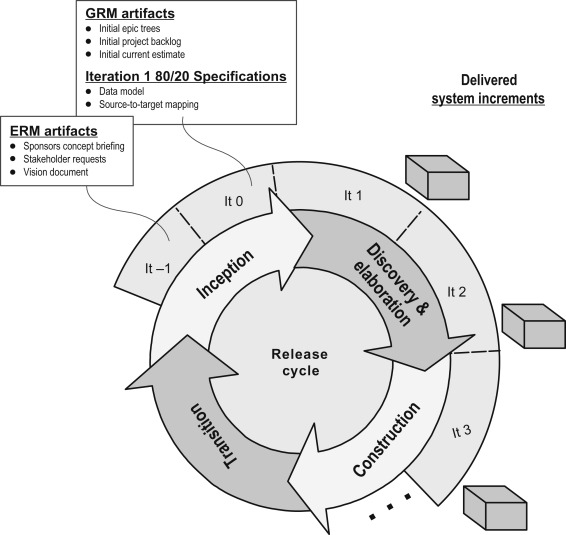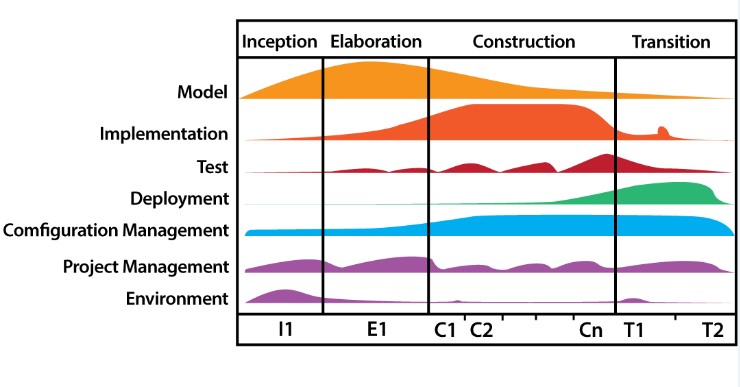
What is Rational Unified Process Methodology?
May 2nd, 2019

Rational Unified Process in Software Testing
Rational Unified Process (RUP) methodology uses the object-oriented approach in its design and the use of UML (Unified Modeling Language) notation is designed and documented to illustrate the processes in action. It uses commercially proven techniques and practices.
It is a process considered heavy and preferably applicable to large development teams and large projects, but the fact that it is extensively customizable allows it to be adapted to projects of any scale.

Specifics
For project management, the RUP(Rational Unified Process) model provides a disciplined solution such as the tasks and responsibilities outlined within a software development organization.
RUP (Rational Unified Process) is, in itself, a software product. It is modular and automated, and its entire methodology is supported by several development tools integrated and sold by IBM through its “Rational Suites.”
The methods of competition in the field of software engineering include “clean rooms” (considered heavy) and agile (light) such as Extreme Programming (XP-Extreme Programming), Scrum, FDD, and others.
There are certain guidelines and templates that are defined, for the staff members of a production cycle, by RUP: part of the client and an evaluation of the progress of the project by its management. It helps developers to stay focused on the project.
Management Requirements
Proper documentation is essential for any large-scale project; note that RUP describes how to document functionality, system limitations, design restrictions, and business requirements.
The use cases and the scenarios are examples of dependent process artifacts, which have been considered much more effective in capturing functional requirements.
The Use of a Component-Based Architecture
The component-based architecture creates a system that can be easily extensible, promoting reuse and software an intuitive understanding. A component usually refers to an object in object-oriented programming.
RUP provides a systematic way to build this type of system, focusing on the production of an executable architecture in the early stages of the project, that is, before committing resources on a large scale.
The Components referred to here are generally included in the infrastructures already existing in the place. These infrastructures include CORBA as well as Component Object Model (COM).
The Use of Visual Software Models in the Rup Model
By abstracting the programming of your code and representing it using graphical building blocks, RUP can be an effective way to get an overview of a solution.
The use of visual models can also allow individuals with a less technical profile (as clients) to have a better understanding of a given problem, and thus be more involved in the project as a whole.
The UML modeling language has become an industry standard for representing projects, and is widely used by RUP!
Know More: Read about Exclusive details of Agile Testing
Check Software Quality
It does not ensure software quality is the most common failure in all computer systems projects. Usually, one thinks about the quality of the software after the completion of the projects or the quality is the responsibility of a different team development team.
Management and Control Change Software
In all software projects, the existence of change is inevitable. RUP defines methods to control and monitor changes. As a small change can affect applications in totally unpredictable ways, change control is essential to the success of a project.
RUP (Rational Unified Process)also defines the areas of work and security, which guarantees a programmer that changes in another system will not affect your system.
Phases of the RUP Methodology
So far these guidelines are general, to be adhered to go through the life of a project cycle. The phases (see figure below) indicate the emphasis given in the project at a given moment. To capture the temporal dimension of a project, RUP divides the project into four different phases:

Initiation or Design: emphasis on the scope of the system;
Preparation: emphasis on architecture;
Construction: emphasis on development;
Transition: emphasis on the application.
RUP is also based on the 4 Ps:
- People
- Design
- Product
- Process
The layers are composed of iterations. Iterations are windows of time; iterations have defined the term as the phases are objective.
All phases generate artifacts. These will be used in the next phase and document the project and allows a better follow-up.
Design Phase
The design or initiation phase contains the workflows necessary for the agreement of interested parties – stakeholders – with the objectives, architecture, and planning of the project. If these actors have good knowledge, it will not be necessary to analyze. Otherwise, a more elaborate analysis is required.
In this stage, the essential requirements of the system are transformed into use cases. The objective is not to close them at all, but only those that are necessary to shape the opinion.
The step is usually short and is used to define if it is feasible to continue with the project and define the risks and the cost of the last one. A prototype can be made for the client to approve. As the RUP cites, the ideal is to perform iterations, which must be well defined in terms of their amount and objectives.
Elaboration Phase
The preparation will be for the design of the system, as a complement to the survey and/or documentation of use cases, in front of the architecture of the system, to review the business model for the project and to start the version of the user manual. One must accept: Product description (increase + integration) is stable; the project plan is reliable? The costs are eligible?
Construction Phase
In the construction phase, the physical development of the software starts, production codes, alpha tests. Beta tests were carried out at the beginning of the transition phase.
You must accept the tests, stable and test processes, and the system code is “baseline”.
Transition Phase
In this phase is the delivery (“deployment”) of software, which carries out the deployment and delivery plan, the monitoring and the quality of the software. Products (releases, versions) are going to be delivered, and place customer satisfaction. This stage also takes place the training of the users.
Disciplines of the RUP (Rational Unified Process) Methodology
The Business Modeling Discipline
Organizations are increasingly dependent on IT systems, so it is imperative that information systems engineers know how applications are integrated into the development of the organization. Companies invest in IT, which understands the competitive advantage of value added by technology.
The goal of business modeling is to first establish a better understanding and communication between business engineering and software engineering.

Understanding the business means that software engineers must understand the structure and dynamics of the target company (the client), the current problems that the organization is facing and potential methods and strategies for making amends.
Another important aspect that must not be undermined is that the relevant parties such as the developers as well as the customers and also the end-users must have a clear understanding about the organization, and an important feature of this understanding is that it must be common among all the parties involved.
Business modeling explains how to describe the vision of an organization in which the system will be implemented and how to use this vision as a basis to describe the processes, functions, and responsibilities.
Course Requirements
This course explains how to get requests from interested parties (“interested parties”) and convert them into a set of requirements that the products work within the system to be built and provide the detailed requirements for what is necessary for the system.
Analysis and Design of the Discipline (“Design”)
The purpose of the analysis and design is to show how the system will be carried out. The objective is to build a system that:
Execute in a specific execution environment, tasks and functions specified in the descriptions of use cases
Satisfy all your needs
It is easy to maintain when there are no changes in the functional requirements, the results of the project in an analysis and design model optionally has an analysis model.
The design model is utilized as a conceptual version of the source code, displaying only the bare minimum. This allows the user of any one inspecting to ascertain the style in which the source code has been rendered.
The design model is rendered in such a way that it contains different divisions of designs. These divisions are stored within definite subsystems.
Every subsystem has a distinct interface that is precisely designed. It also contains descriptions of how the objects in these classes collaborate to carry out the design of use cases.
The Discipline Implementation
The effects of the application are:
- With reference to the layered subsystems organized for an application, the organization code is configured.
- The different classes or divisions of components are carried out. These components include
- Source Files
- Executables and
- Binaries
- Components developed as units are tested
Incorporate the results produced by the individual executors (or teams), in an executable system. The systems are achieved through the components of the application.
The process aims at performing an important function, which is to define the exact procedure to be utilized, in order to re-utilize components which are either; already existing or have been freshly introduced.
This allows for a hassle system maintenance possibility and a substantial improvement in chances of the utilization of components.
Discipline Test
The purposes of discipline testing are:
- Check the interaction between objects
- Check the correct integration of all software components
- Check that all requirements have been executed correctly
- Identify and ensure that defects are addressed before the software implementation
- Make sure that all defects are corrected, reviewed and closed
Conclusion
In case there are defects in the project, their correction may take up unnecessary costs due to the defects not being brought to light within due time.
If the project, however, is tested in its entirety, this would be beneficial as any defects which might be creeping into the projects can be identified and ascertained at the earliest.

This will, in turn, have a massive reduction in the costs involved with the rectification of the defects. This is the iterative approach proposed by the Rational Unified Process.
In order for the test to bear fruits and have the best possible outcomes, the tests need to be conducted on four parameters of quality and also there must be set standards which need to be met for the project to be considered as have passed the test.


 Software Testing Events
Software Testing Events App Testing
App Testing Web App Testing
Web App Testing Game Testing
Game Testing Automation Testing
Automation Testing Load Testing
Load Testing Security Testing
Security Testing Performance Testing
Performance Testing Hire a Tester
Hire a Tester





